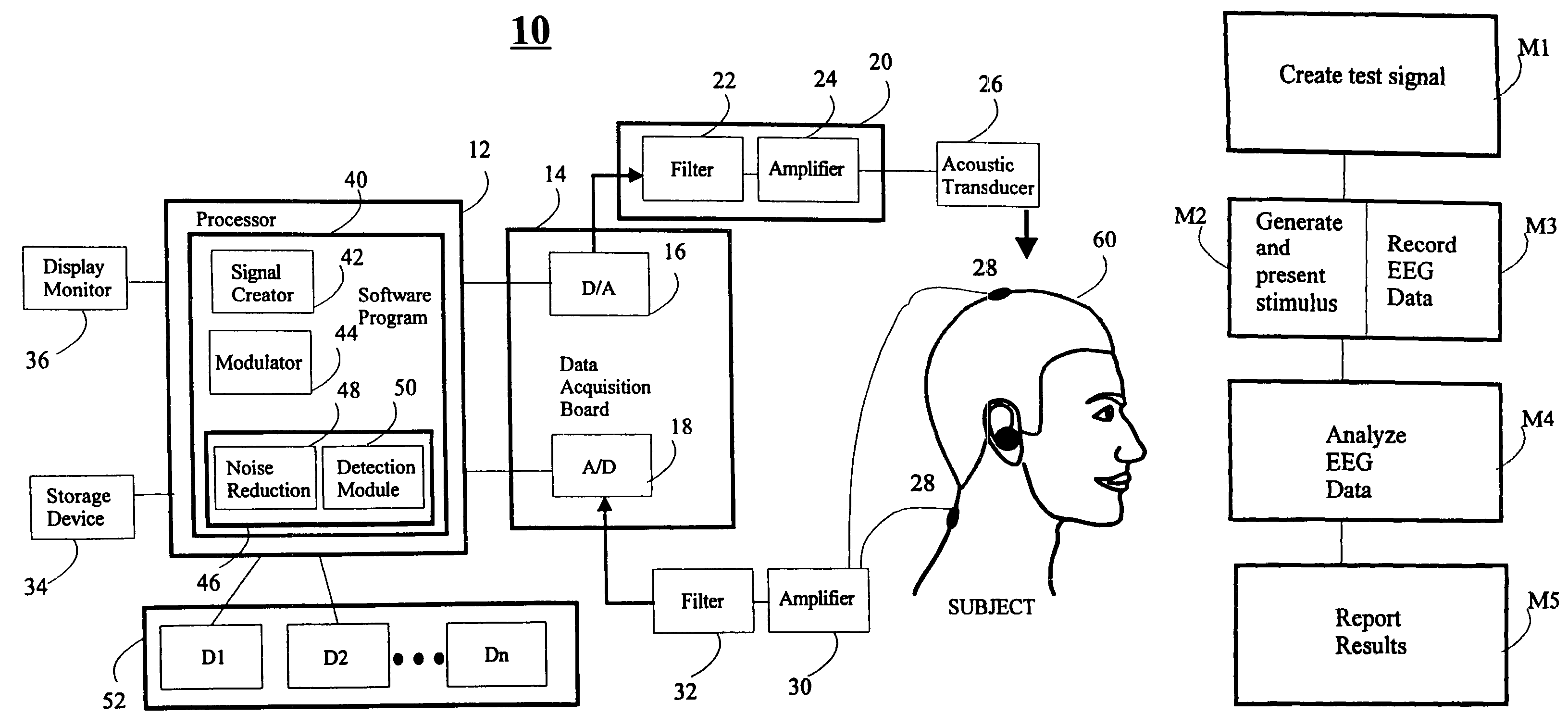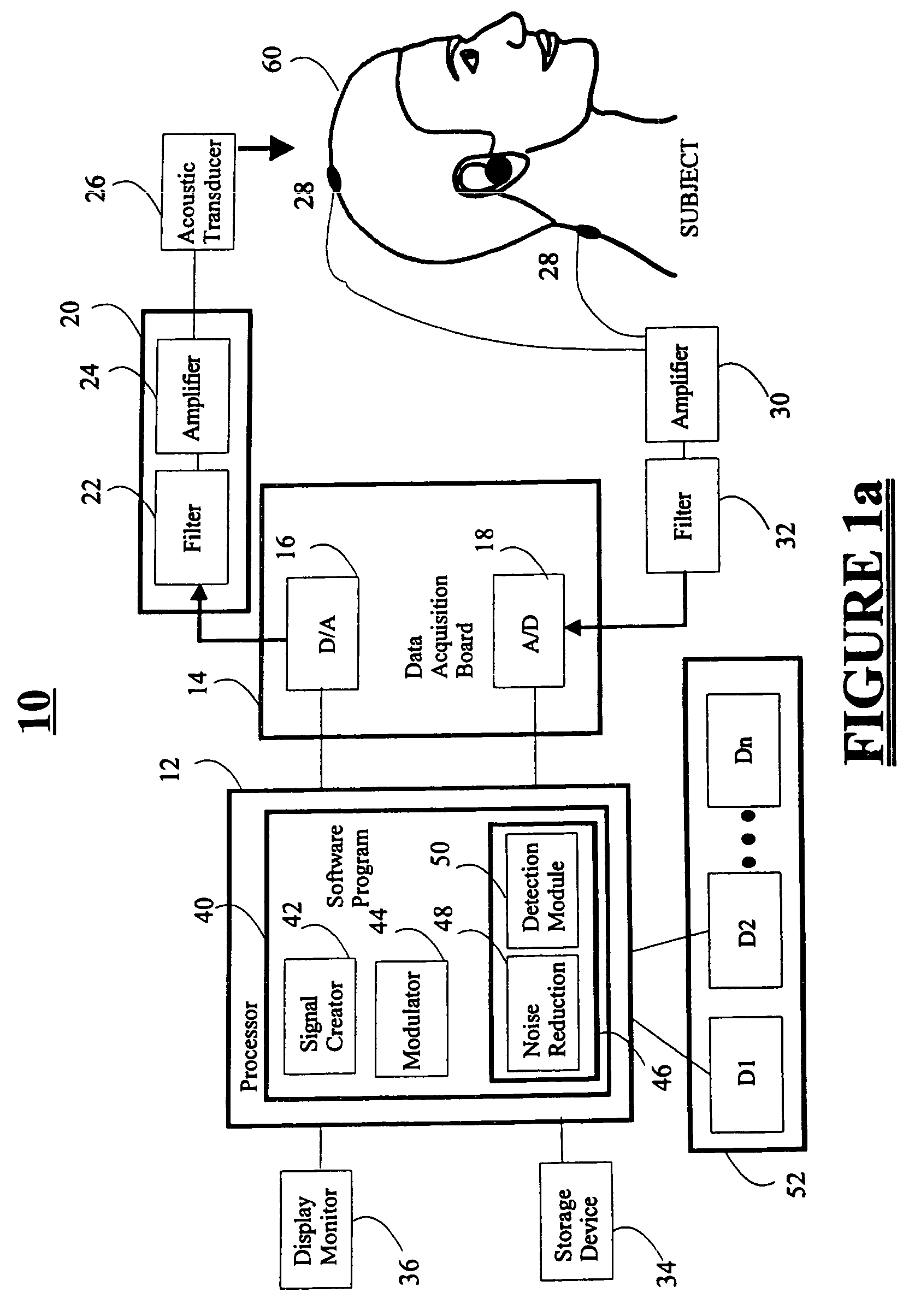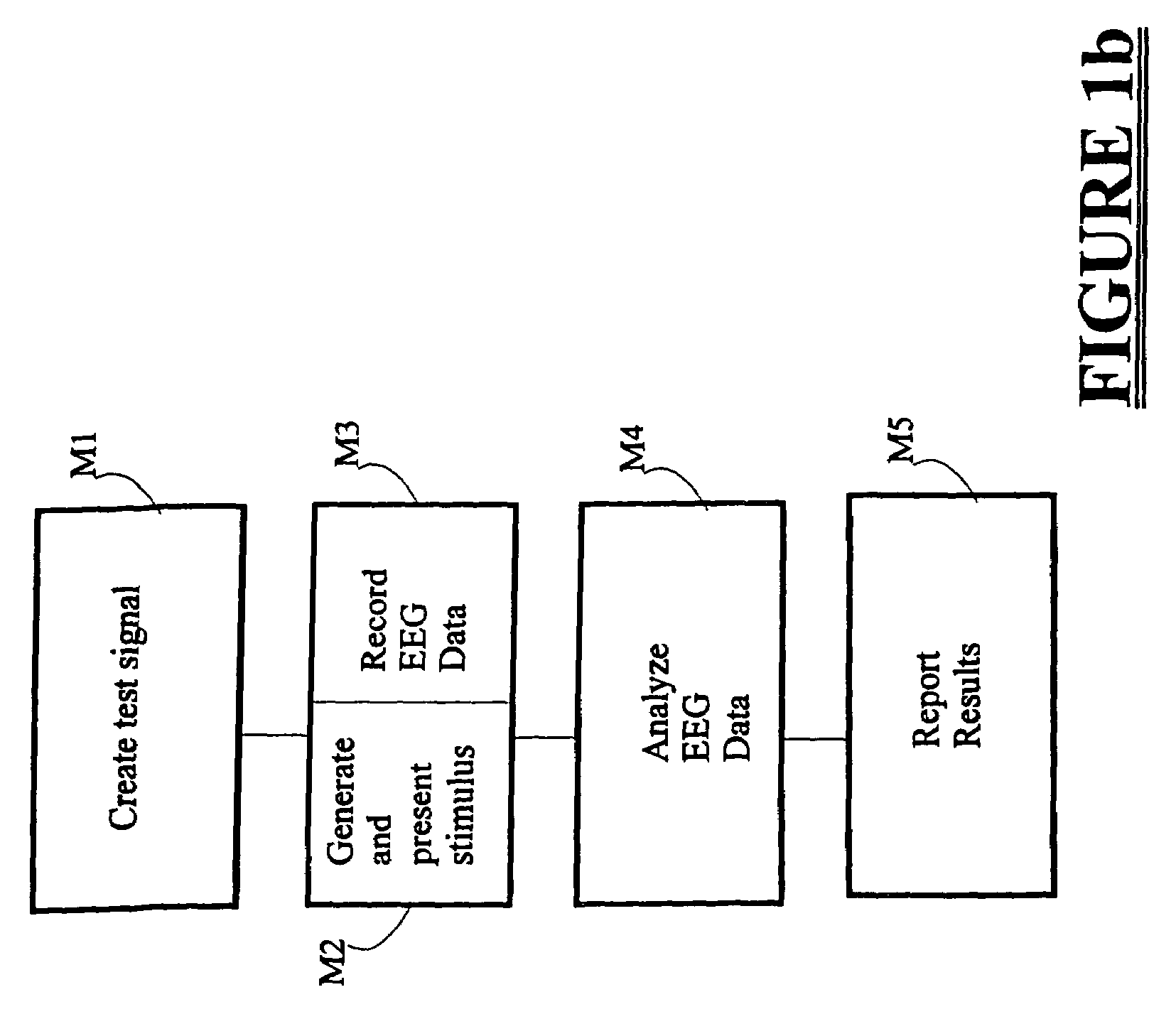System and method for objective evaluation of hearing using auditory steady-state responses
a steady-state response and objective evaluation technology, applied in the field of auditory assessment, can solve the problems of limited objective testing of speech, frequency or intensity discrimination, and inability to perform conventional audiometry, and achieve the effects of improving the accuracy of speech and frequency, reducing the difficulty of hearing impairment, and improving the accuracy of hearing
- Summary
- Abstract
- Description
- Claims
- Application Information
AI Technical Summary
Benefits of technology
Problems solved by technology
Method used
Image
Examples
Embodiment Construction
[0045]This disclosure describes preferred embodiments of an apparatus for recording steady-state evoked potentials and a set of methods for using the apparatus to test various aspects of a subject's hearing. The basic hardware and software components of the apparatus will be discussed first. Noise reduction methods will be discussed next followed by response detection. Test signals which can be used for SSAEPs will then be discussed. Finally, protocols for objective audiometric testing based on SSAEP stimuli will be discussed.
Hardware and Software Components of the Preferred Embodiments
[0046]Referring to FIG. 1a, the objective audiometric test apparatus 10 includes a processor 12, a data acquisition board 14 having a digital to analog converter (DAC) 16 and an analog to digital converter (ADC) 18, an audiometer 20 having a filter 22 and an amplifier 24, a transducer 26, a sensor 28, a second amplifier 30, a second filter 32, a master database 52 having a plurality of databases D1, D...
PUM
 Login to View More
Login to View More Abstract
Description
Claims
Application Information
 Login to View More
Login to View More - R&D
- Intellectual Property
- Life Sciences
- Materials
- Tech Scout
- Unparalleled Data Quality
- Higher Quality Content
- 60% Fewer Hallucinations
Browse by: Latest US Patents, China's latest patents, Technical Efficacy Thesaurus, Application Domain, Technology Topic, Popular Technical Reports.
© 2025 PatSnap. All rights reserved.Legal|Privacy policy|Modern Slavery Act Transparency Statement|Sitemap|About US| Contact US: help@patsnap.com



